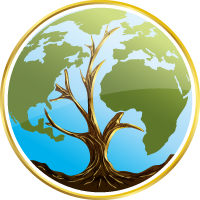Table of Contents
By David Sinclair, PhD

There’s a reason why for centuries exercise has been the go-to prescription for vitality.
According to a recent study funded by the Centers for Disease Control and Prevention, individuals who exercise more—the equivalent of at least a half hour of jogging five days a week—have telomeres that appear to be nearly a decade younger than those who live a more sedentary life.
In another study, researchers reviewed the medical records of more than 55,000 people and cross-referenced those documents with death certificates issued over fifteen years.
Among 3,500 deaths, they weren’t particularly surprised to see that those who had told their doctors they were runners were far less likely to die of heart disease.
Even when the researchers adjusted for obesity and smoking, the runners were less likely to have died during the years of the study. The big shock was that the health benefits were remarkably similar no matter how much running the people had done.
Even about ten minutes of moderate exercise a day added years to their lives.
Exercise is Even More Important as We Age
We all need to be pushing ourselves, especially as we get older, yet only 10 percent of people over the age of 65 do. The good news is that we don’t have to exercise for hours on end.
One recent study found that those who ran four to five miles a week—for most people, that’s an amount of exercise that can be done in less than 15 minutes per day—reduce their chance of death from a heart attack by 45 percent and all-cause mortality by 30 percent. That’s a massive effect.
There is a difference between a leisurely walk and a brisk run, however. To engage longevity genes fully, intensity does matter.
Mayo Clinic researchers studying the effects of different types of exercise on different age groups found that although many forms of exercise have positive health effects, it’s high-intensity interval training (HIIT)—the sort that significantly raises your heart and respiration rates—that engages the greatest number of health-promoting genes, and more of them in older exercisers.
You’ll know you’re doing vigorous activity when it feels challenging. Your breathing should be deep and rapid at 70 to 85 percent of your maximum heart rate. You should sweat and be unable to say more than a few words without pausing for breath. This is the hypoxic response, and it’s great for inducing just enough stress to activate your body’s defenses against aging.
Importance of Longevity Genes
We’re still working to understand what all of the longevity genes do, but one thing is already clear: many of the longevity genes that are turned on by exercise are responsible for the health benefits of exercise, such as extending telomeres, growing new micro-vessels that deliver oxygen to cells, and boosting the activity of mitochondria, which burn oxygen to make chemical energy.
We’ve known for a long time that these bodily activities fall as we age. What we also know now is that the genes most impacted by exercise-induced stress can bring them back to the levels associated with youth.
In other words: exercise turns on the genes to make us young again on a cellular level.
—
David Sinclair, PhD, AO, has been named by Time as “one of the 100 most influential people in the world” and top fifty most influential people in healthcare. He is a board member of the American Federation for Aging Research and has received more than thirty-five awards for his scientific breakthroughs. Sinclair and his work have been featured on 60 Minutes, Today, The Wall Street Journal, The New York Times, Fortune, and Newsweek, among others. To learn more, visit LifespanBook.com and follow him on Twitter @DavidASinclair, on Instagram @davidsinclairphd, and podcast Lifespan with Dr. David Sinclair.
Well Being Journal adapted the excerpt from Lifespan by David A Sinclair, PhD, with Matthew D LaPlante. Copyright © 2019 by David A Sinclair, PhD. Reprinted by permission of Atria Books, a Division of Simon & Schuster, Inc.





